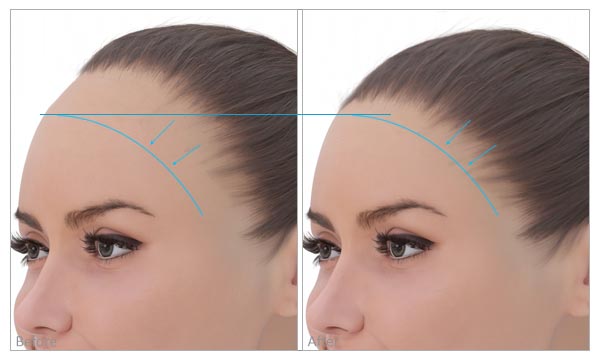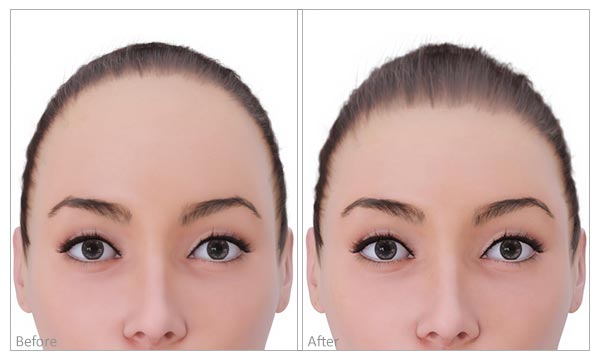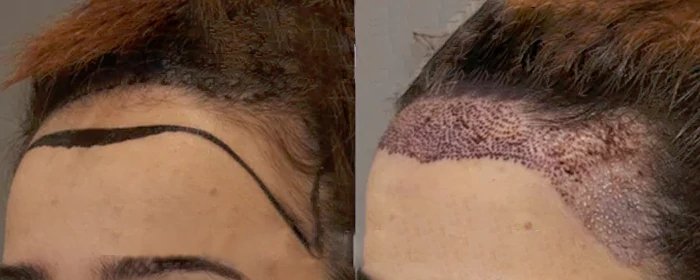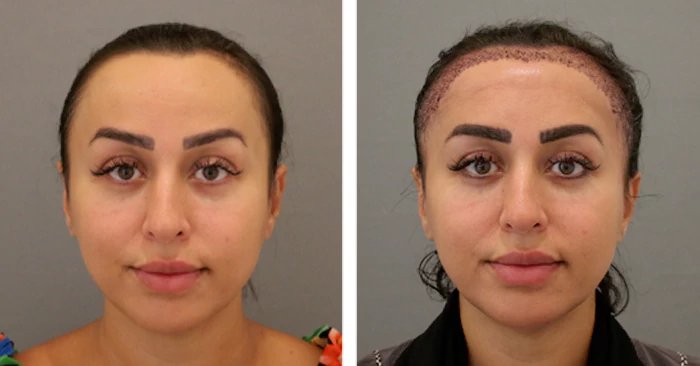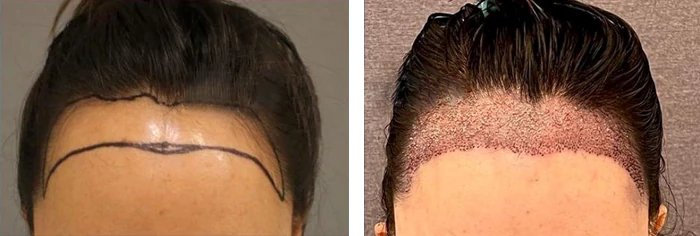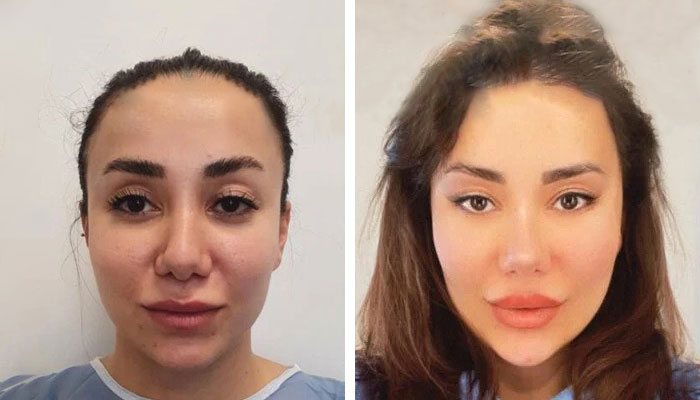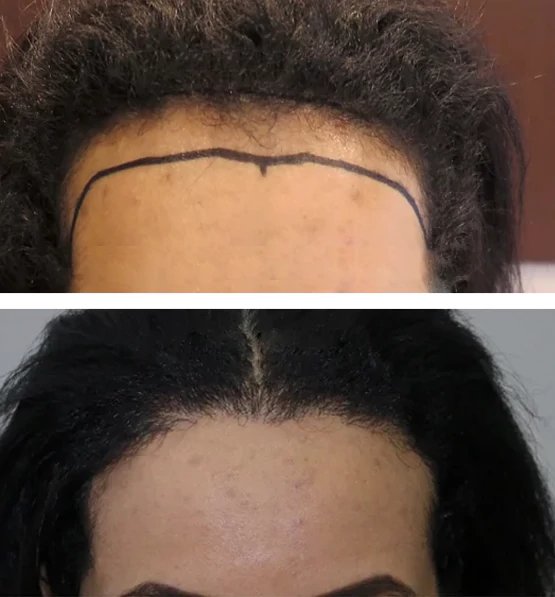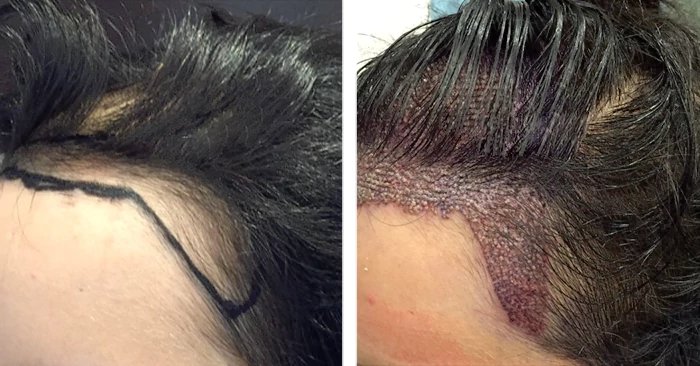Introduction
Hairline lowering with hair transplant is a surgical procedure designed to alter the location of the hairline by filling in receding or naturally high hairlines with hair follicles harvested from other areas of the scalp. Using meticulous techniques, individual hair follicles or small groups of follicles are taken typically from the back of the scalp and transplanted to the frontal hairline area. This technique allows for a natural, denser appearance, helping to achieve a more youthful and balanced hairline. It is a popular choice among individuals facing hair loss or dissatisfaction with the height of their hairline.
What is hairline lowering by transplant?
Hairline lowering is a cosmetic procedure aimed at reducing the height of the hairline. It involves surgically moving the frontal hairline forward to achieve a more balanced and aesthetically pleasing appearance. This procedure is typically performed on individuals with a high hairline or a disproportionately large forehead.
During the surgery, hair follicles are harvested from the donor area (usually the back or sides of the scalp) and transplanted to the desired location along the frontal hairline. The transplanted hair follicles continue to grow naturally, resulting in a permanent and natural-looking hairline.
Who are Good Candidates?
Typically, good candidates for hair transplant are individuals who have experienced significant hair loss at the front of their scalp and have enough donor hairs available at the back or sides of their head. Candidates must have realistic expectations about what this procedure can achieve and understand that growing out transplanted hair may take several months.
Ideally, candidates for this procedure should be in good overall health and without any underlying medical conditions that would interfere with their ability to heal after surgery. Your surgeon will evaluate your medical history and overall health during your initial consultation to decide if you are a good candidate for this procedure.
How to Prepare for Hairline Lowering with Hair Transplant
Before the surgery, follow your surgeon's instructions to ensure optimal health. This may include instructions on diet, medication or supplement avoidance, and mental and physical preparation for the procedure. Some general guidance may include:
- Avoiding medications or supplements that might increase your bleeding risk: Certain medications and supplements, such as blood thinners and aspirin, can make you more prone to bleeding during and after surgery. Your surgeon may provide a list of medications and supplements to avoid before the procedure.
- Refraining from smoking or drinking alcohol in the weeks leading up to surgery: Both can interfere with the body's healing process and increase the risk of complications during surgery.
- Arranging for someone to drive you home after the procedure: After anesthesia, driving is not recommended, so arrange transportation beforehand.
- Washing your hair with a special shampoo: Your surgeon may provide a special shampoo to use before the procedure to ensure your scalp is clean and free of any product residue.
- Avoiding certain hair products: Your surgeon may advise you to avoid certain hair products that can irritate the scalp or interfere with the healing process after the procedure. This may include hair sprays, gels, or dyes.
- By following these pre-operative instructions carefully, you can help ensure a smooth procedure and swift recovery.
How It’s Done
During a hair transplant, the surgeon will first remove individual follicular grafts (groups of 1-4 hairs) from the donor area. He/she will then make small incisions at the front of the scalp, where they will then carefully place these grafts into the incisions at the front of the scalp to create a natural-looking hairline.
The procedure is often performed under local anesthesia and takes a few hours. Although there may be some discomfort during and after surgery, most patients can manage this with pain medication.
Comparison between FUT and FUE Techniques
The two basic techniques used for hair transplantation are follicular unit transplantation (FUT) and follicular unit extraction (FUE). In FUT, a narrow strip of skin is removed from the donor area and dissected into individual follicular units, while in FUE, follicular units are extracted directly from the scalp.
FUT typically allows for the transplantation of more hair follicles in a single session, but it also requires a longer recovery time due to the need for sutures to close the donor site. Additionally, FUT can leave a linear scar at the donor site, which may be visible if the hair is cut short.
FUE, conversely, does not leave a linear scar and generally has a shorter recovery time. However, it may be more time-consuming and expensive than FUT, as each follicular unit must be extracted separately.
Your surgeon will evaluate your case and determine which technique best suits your needs.
What's the Recovery Like?
After the procedure, patients can expect swelling and discomfort at both the donor and recipient sites, which should subside within a few days. Patients must adhere to their surgeon's post-operative instructions carefully to promote healing and minimize the risk of complications.
Generally, patients can return to work and other normal activities within one to two weeks after their surgery, depending on the type of procedure performed. However, strenuous activities such as exercise or heavy lifting should be avoided for several weeks to allow the scalp time to heal properly.
What are the Side Effects and Risks
Like any surgical procedure, there are risks associated with a hair transplant. These may include infection, bleeding, scarring, or poor growth of transplanted hairs. It's essential to discuss these risks with your surgeon before undergoing the procedure.
Potential side effects of a forehead hair transplant include temporary numbness or tingling at the donor or recipient sites, swelling or bruising around the eyes or forehead, and changes in hair texture.
Most of these side effects are transient and should resolve within a few weeks after surgery. However, if you experience any unusual symptoms or have concerns about your recovery, be sure to contact your surgeon immediately.
Cost of the Procedure
The cost of a hair transplant procedure, particularly one targeting a receding hairline, can vary based on factors such as geographic location and the experience of the surgeon. Patients are encouraged to consult with their surgeons to receive an accurate estimate for the procedure. It's worth noting that hair transplants, specifically those aiming to lower the hairline, are generally classified as cosmetic procedures, and are typically not covered by insurance. Nonetheless, some patients may opt to finance their procedure through medical loans or credit cards.
Results
After undergoing a hairline lowering procedure with a hair transplant, it may take several months for the transplanted hair to reach its fullest potential. Despite this, most patients will start to see noticeable improvements in the appearance of their hairline within a few weeks of the procedure.
Hair transplantation results are generally long-lasting. The transplanted hairs are typically resistant to the effects of DHT (dihydrotestosterone), the hormone that contributes to male pattern baldness. However, it's crucial to remember that hair loss can still occur in other areas of the scalp, and some patients may require additional procedures in the future to maintain their results.
Maintenance
Maintaining the results of your forehead hair transplant procedure requires careful adherence to your surgeon's post-operative instructions. This may include avoiding certain activities or hair products for a few weeks after surgery and promoting healthy hair growth (for example, by maintaining a balanced diet and refraining from smoking), among others.
Your surgeon may also recommend the use of topical minoxidil or finasteride to prevent further hair loss and promote healthy growth.
Comparing Hairline Lowering with Scalp Advancement and Hair Transplant
There are two primary techniques for correcting a high or receding hairline: hairline lowering with scalp advancement and hair transplant. While both methods aim to enhance the appearance of the hairline and give it a more youthful and natural look, they differ significantly in their approach, recovery time, and suitability for different patients.
Hairline lowering with scalp advancement is a more invasive procedure that involves removing a section of skin from the forehead and moving the scalp forward. This procedure is most effective for people with a high hairline or a large forehead, with the results being permanent and long-lasting. However, it requires a more extended recovery period and may not be suitable for those with less scalp flexibility or those who prefer non-surgical options.
On the other hand, a forehead hair transplant is a non-surgical method in which hair follicles are taken from one area of the scalp and transplanted to another. This method is a suitable option for individuals experiencing hair loss or thinning hair. The results are natural-looking and the recovery time is generally shorter than with hairline lowering with scalp advancement. However, it may not be a viable option for people with significant hair loss or an inadequate amount of donor hair. Furthermore, the effects are not always permanent, and multiple sessions may be necessary to maintain the desired results.


